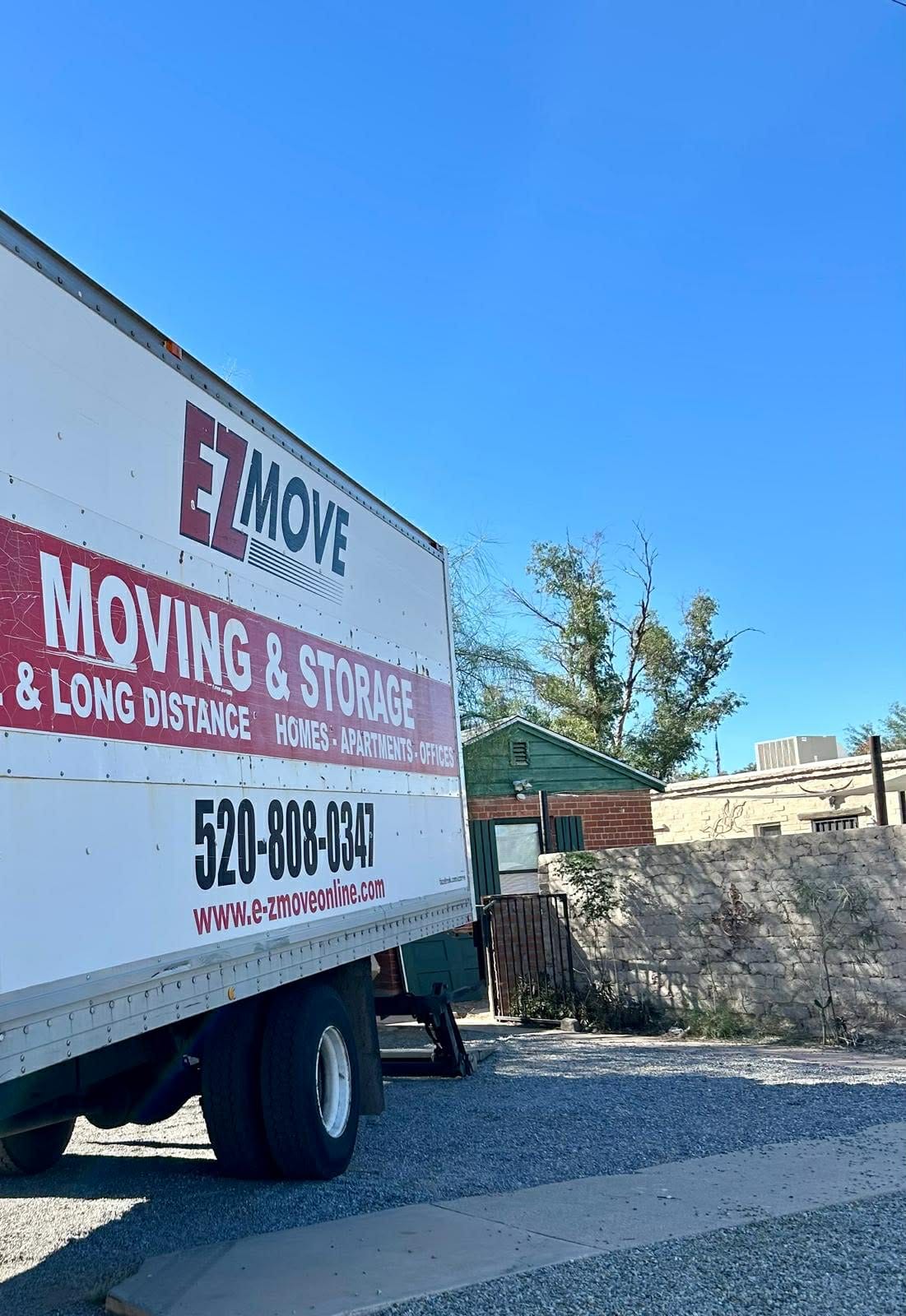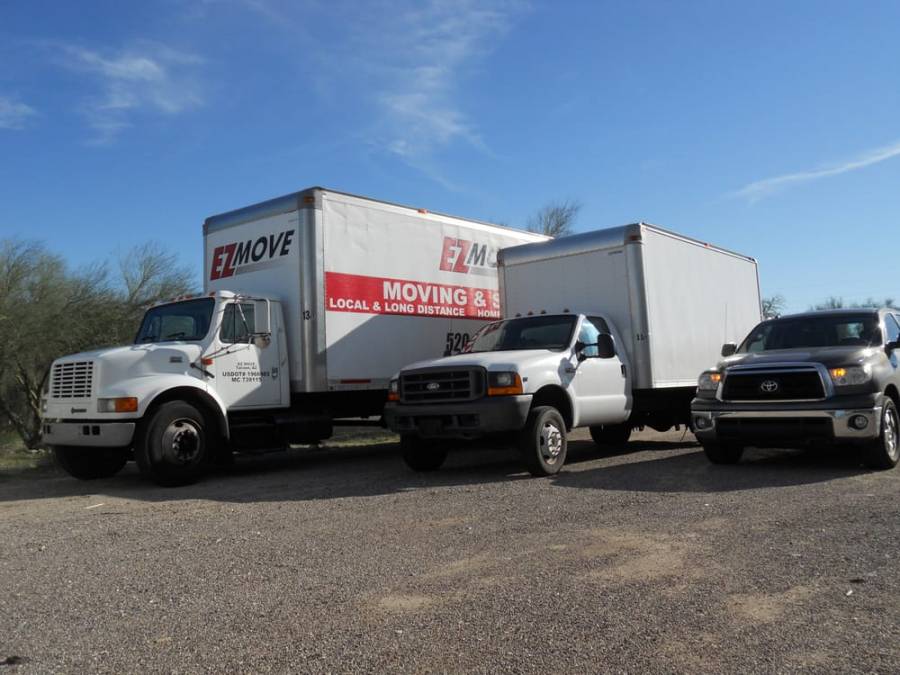Moving to or within Tucson presents unique challenges that require careful planning and preparation. The desert climate, extreme temperatures, and specific environmental factors demand specialized packing strategies to ensure your belongings arrive safely at your new home. Whether you’re relocating across town or moving to Tucson from another state, understanding the nuances of packing in Arizona’s intense heat will save you time, money, and frustration during your transition.
The desert environment creates conditions that can damage electronics, warp wooden furniture, melt certain materials, and cause other items to deteriorate rapidly if not properly protected. Successful packing tips Tucson residents swear by focus heavily on temperature control, moisture protection, and strategic timing. Your relocation success depends on understanding these environmental factors and planning accordingly.
Essential Packing Materials for Desert Conditions
When preparing for your Tucson relocation, standard packing supplies won’t always suffice. The extreme heat and dry conditions require enhanced protection materials that can withstand temperatures often exceeding 110°F during summer months. Your packing arsenal should include heavy-duty corrugated boxes, preferably double-walled for extra insulation and structural integrity.
Climate-controlled storage considerations become paramount when selecting materials. Bubble wrap provides excellent cushioning, but in extreme heat, standard bubble wrap can lose its protective qualities. Investing in anti-static bubble wrap helps protect electronics from both physical damage and static buildup common in dry desert air. Packing paper should be acid-free to prevent yellowing and deterioration, while plastic wrap should be UV-resistant to avoid degradation from intense sunlight exposure.
Specialized materials for Arizona moves include reflective insulation, which acts as a barrier against heat transfer. Dessicant packets help control moisture levels inside sealed boxes, preventing mold growth during monsoon season transitions. Heavy-duty packing tape designed for extreme temperatures ensures your boxes stay sealed even when exposed to temperature fluctuations that can cause standard tape to fail.
For fragile items, consider investing in foam padding and custom-fit boxes. These materials provide superior protection against both impact and temperature-related expansion and contraction. Professional moving blankets rated for temperature resistance offer additional protection for furniture and large items during transport and temporary storage.
Room-by-Room Packing Strategy
Kitchen Preparation and Protection
Your kitchen contains the most diverse collection of items requiring specialized packing approaches. Start by sorting items into categories: dishes, glassware, small appliances, pantry items, and cleaning supplies. Each category demands different protection strategies when facing Arizona’s extreme conditions.
Dishes and glassware need extra cushioning due to thermal expansion risks. Wrap each piece individually in packing paper, then add a layer of bubble wrap. Place heavier items at the bottom of boxes and fill empty spaces with crumpled paper to prevent shifting. Mark these boxes clearly and ensure they’re loaded into climate-controlled areas of moving trucks when possible.
Small appliances require special attention in desert climates. Electronics can malfunction when exposed to extreme heat, so pack these items in insulated boxes with plenty of cushioning. Remove any removable parts and pack them separately. For items with LCD displays or delicate components, consider using silica gel packets to control moisture levels.
Pantry items present unique challenges in hot weather. Canned goods expand in heat and can burst if temperatures become excessive. Spices lose potency rapidly in high temperatures, so pack them in airtight containers within insulated boxes. Avoid packing chocolate, candles, or other heat-sensitive items during summer months, or plan for immediate unpacking in climate-controlled environments.
Bedroom and Clothing Organization
Bedrooms typically contain a mix of furniture, clothing, and personal items that each require different packing approaches. Clothing can actually provide excellent padding material while being transported, but it also needs protection from dust and extreme temperatures that can cause fading or material damage.
Vacuum-sealed bags work exceptionally well for clothing in Arizona’s dry climate, but avoid using them for delicate fabrics that might wrinkle permanently. Instead, use wardrobe boxes for hanging clothes, which protect them from dust while allowing air circulation. Pack seasonal clothing in clear plastic containers to make identification easier and provide moisture protection.
Wooden furniture requires particular attention in desert conditions. Wood expands and contracts significantly with temperature changes, so avoid over-tightening protective wraps that might restrict natural movement. Use furniture pads and moving blankets, securing them loosely enough to allow for expansion. Remove drawers and pack them separately to reduce weight and prevent structural stress during temperature fluctuations.
Electronic items in bedrooms, such as televisions, computers, and gaming systems, need careful temperature management. Original packaging provides the best protection, but if unavailable, use anti-static materials and ensure adequate cushioning. Never leave electronics in hot vehicles or storage units without climate control, as this can cause permanent damage to internal components.
Living Areas and Valuable Items
Living rooms often contain your most valuable and sentimental possessions, making proper packing crucial for both financial and emotional reasons. Large furniture pieces, artwork, electronics, and decorative items each present unique challenges in Arizona’s climate.
Artwork and photographs are particularly vulnerable to heat damage, fading, and warping. Use acid-free materials exclusively when packing these items. Create custom-sized boxes or use picture boxes with additional padding. Never store artwork in areas that might experience temperature extremes, and consider professional packing services for particularly valuable pieces.
Electronics require comprehensive protection strategies. Television screens can crack from thermal stress, so pack them in original boxes when possible or create custom padding systems. Gaming consoles, stereo equipment, and computers should be packed with anti-static materials and adequate cushioning. Include silica gel packets to control moisture, and ensure these items are among the first to be moved into climate-controlled environments.
Leather furniture and upholstery need protection from both heat and extreme dryness that can cause cracking and fading. Use breathable covers rather than plastic wraps, which can trap moisture and cause mold growth. Apply leather conditioners before packing to help materials withstand environmental stress during the move.
Strategic Packing Timeline for Arizona Conditions
Pre-Move Planning Phase
Successful how to pack for a move Tucson strategies begin weeks before your actual moving date. Start by creating a comprehensive inventory of heat-sensitive items that require special handling or priority placement in climate-controlled storage. This planning phase allows you to source appropriate materials and coordinate with professional services when necessary.
Begin decluttering early, particularly items that don’t transport well in extreme heat. Candles, chocolate, wine, and certain cosmetics may be better replaced after your move rather than risked during transport. Donate or sell items you won’t need, reducing your overall packing load and potential heat-related losses.
Schedule your move strategically around Arizona’s weather patterns. Summer temperatures make packing and moving significantly more challenging, while winter months offer more comfortable conditions. If summer moving is unavoidable, plan for very early morning or late evening packing sessions to avoid peak heat hours.
Week-by-Week Packing Schedule
Six weeks before your move, begin collecting packing materials and start with non-essential items that can withstand storage. Books, out-of-season clothing, and decorative items can be packed early and stored in climate-controlled areas. This approach spreads the workload and reduces last-minute stress.
Four weeks prior, tackle larger furniture pieces and items requiring disassembly. Arizona’s dry air can cause wood joints to tighten, making disassembly more difficult if left until the last minute. Take photographs of complex setups before disassembly to simplify reassembly in your new home.
Two weeks before moving, focus on daily-use items and coordinate with E-Z Move for any professional packing services you might need. Professional packers understand local climate challenges and can ensure your most valuable items receive appropriate protection.
The final week should involve only essential items you’ll need until moving day. Pack a survival kit with items you’ll need immediately upon arrival, including medications, important documents, and basic tools. Keep these items with you rather than in the moving truck to ensure they’re not exposed to extreme temperatures.
Heat-Specific Packing Strategies
Temperature-Sensitive Item Protection
Arizona’s intense heat creates unique challenges that require specialized approaches beyond standard moving practices. Items that might survive moves in moderate climates can be permanently damaged by exposure to temperatures regularly exceeding 100°F for extended periods.
Vinyl records, compact discs, and other media can warp irreversibly in high temperatures. Pack these items in insulated boxes with reflective barriers, and include temperature-monitoring devices if the items are particularly valuable. Never leave these items in vehicles or unventilated storage areas during hot weather.
Cosmetics and personal care products often contain ingredients that separate or change consistency in extreme heat. Pack these items in coolers or insulated containers, and plan to transport them in air-conditioned vehicles. Many liquid products can expand and leak when heated, so place them in sealed plastic bags within their boxes.
Medications require careful temperature control to maintain their effectiveness. Many prescription drugs lose potency when exposed to high temperatures, while others can become dangerous. Keep medications with you in climate-controlled environments throughout the moving process, and consult with pharmacists about any concerns regarding temperature exposure.
Protecting Against Sun Damage
Direct sunlight in Arizona is intense enough to cause immediate damage to many materials. UV radiation can fade fabrics, crack plastics, and deteriorate rubber components in just hours of exposure. Your packing strategy must account for these risks throughout the entire moving process.
Use UV-resistant materials whenever possible, and avoid clear plastic containers for items susceptible to sun damage. Aluminum foil can provide effective UV protection for windows of moving trucks or storage containers, though professional moving services typically have UV-resistant trucks designed for desert conditions.
Schedule loading and unloading activities during early morning or late evening hours when UV exposure is minimized. Even brief exposure to midday desert sun can cause damage to sensitive items, so timing becomes a critical component of your packing strategy.
Local Tucson Supply Sources
Recommended Suppliers for Moving Materials
Tucson offers several excellent sources for specialized packing materials designed for desert conditions. U-Haul locations throughout the city stock heat-resistant packing supplies and can provide advice on local moving challenges. Their staff understands the unique requirements of Arizona moves and can recommend appropriate materials for your specific needs.
Home Depot and Lowe’s locations in Tucson carry professional-grade moving supplies, including heavy-duty boxes, industrial-strength tape, and climate-control materials. These stores often stock specialized items like moisture absorbers and UV-resistant wraps that may not be available at smaller retailers.
Local packaging stores such as The UPS Store and Pack & Ship offer custom packing solutions and professional advice. These businesses understand Tucson’s climate challenges and can provide specialized services for valuable or particularly sensitive items. They also offer storage solutions if you need temporary climate-controlled space during your transition.
For bulk purchases or commercial-grade supplies, consider contacting local moving supply distributors directly. These suppliers often offer better prices for large quantities and may have access to specialized materials not available through retail channels.
Professional Service Coordination
While this guide focuses on self-packing strategies, certain situations warrant professional assistance. E-Z Move’s packing services specialize in Arizona’s unique climate challenges and can ensure your most valuable items receive expert protection. Professional packers have access to commercial-grade materials and understand the specific techniques needed for desert moving conditions.
Consider professional services for valuable artwork, antiques, or electronics that could suffer significant damage from heat exposure. The cost of professional packing often proves minimal compared to potential replacement costs for damaged items.
Final Preparations and Transport Considerations
Loading and Transport Strategy
The final phase of your packing process involves strategic loading that accounts for temperature variations within moving vehicles. Even climate-controlled trucks experience temperature gradients, with some areas remaining cooler than others during transport.
Load heat-sensitive items first, placing them in the most protected areas of the truck. Electronics, artwork, and other valuable items should be positioned away from walls that might experience direct sun exposure. Use the center of the truck’s cargo area for maximum temperature stability.
Create a priority unloading list that ensures temperature-sensitive items are removed first upon arrival. This strategy minimizes exposure time and reduces the risk of heat-related damage during the critical final phase of your move.
Post-Move Unpacking Priorities
Plan your unpacking strategy around temperature control and item sensitivity. Electronics should be unpacked and placed in climate-controlled environments immediately, even if their final positions aren’t determined. This approach prevents damage from continued exposure to temperature fluctuations.
Allow wooden furniture and other materials to acclimate gradually to your new home’s climate. Rapid temperature changes can cause cracking, warping, or other damage even after items have been safely transported. Gradual acclimatization helps prevent post-move damage that might not appear immediately.
Monitor unpacked items for signs of heat-related damage over the first few weeks in your new home. Some effects of temperature exposure may not become apparent immediately, and early detection can help prevent further deterioration.
Your successful Tucson move depends on understanding and preparing for the unique challenges presented by Arizona’s desert climate. By following these comprehensive packing strategies, sourcing appropriate materials, and timing your activities strategically, you can ensure your belongings arrive safely at your new home. Remember that professional assistance is available when dealing with particularly valuable or sensitive items, and don’t hesitate to invest in quality materials and services to protect your possessions during this important transition.
For additional moving resources and professional assistance, visit the American Moving & Storage Association for industry standards and best practices that complement these Arizona-specific strategies.



